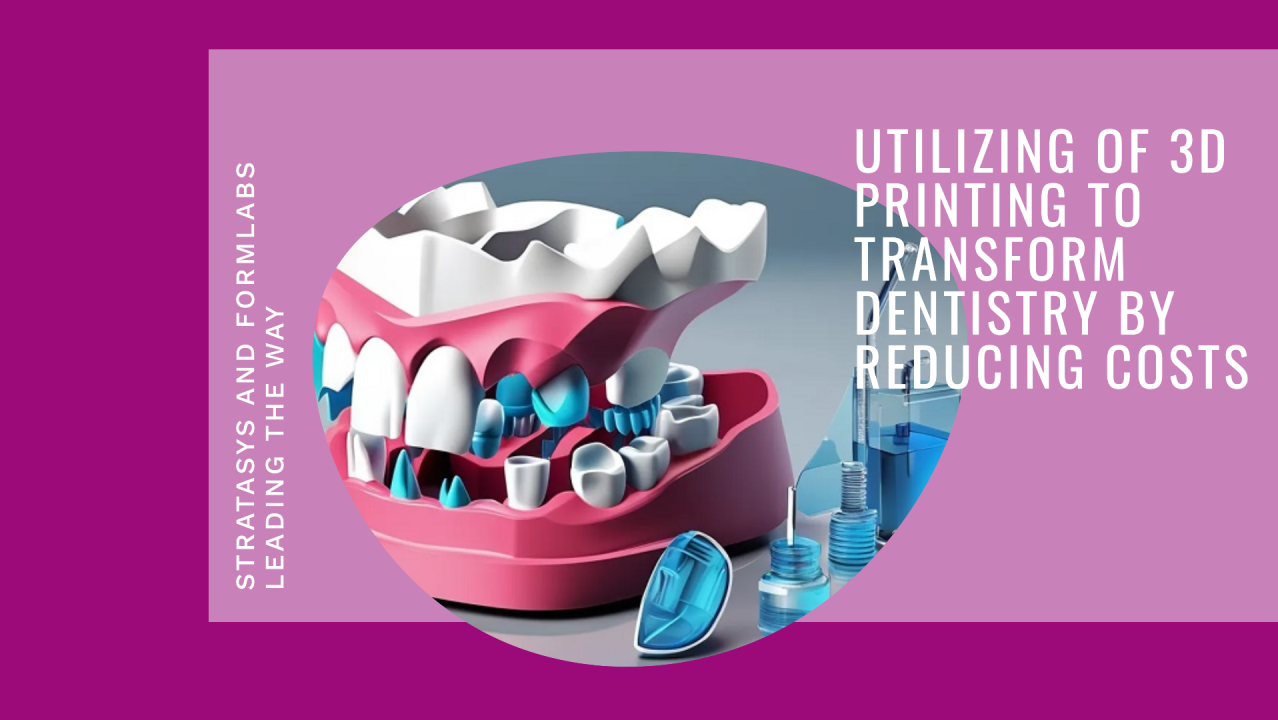1. How Can Clinics Reduce Costs Using Affordable Dental 3D Printing Technologies?
Dental 3D printing is rapidly transforming the dental industry by offering more affordable and efficient solutions. Traditionally, creating dental prosthetics like crowns, bridges, and aligners was expensive and time-consuming.
Today, innovations in dental 3D printing, such as Formlabs’ cost-effective stereolithography (SLA) printers, allow dental labs and clinics to produce high-quality dental devices at a fraction of the cost.
Stratasys Ltd. is at the forefront, developing multi-material 3D printers like the J700 Dental, specifically designed to produce orthodontic devices. By reducing material waste and using less expensive resins, clinics can now fabricate precision-fit models in-house without relying on external labs.
This not only minimizes production costs but also significantly speeds up turnaround times, improving patient satisfaction.
Moreover, DWS Systems offers affordable solutions with its 3D printers using biocompatible materials, reducing the cost per part without sacrificing quality.
Affordable dental 3D printing technologies are essential for clinics aiming to lower operational costs while maintaining high-quality results.
2. How Are 3D Printed Crowns and Bridges Improving Dental Restoration Processes?
The dental restoration process has undergone a revolution thanks to 3D printing. With advancements in resin-based printing technologies, dental crowns and bridges can now be produced with incredible precision.
EnvisionTEC Inc. has developed 3D printers like the Perfactory series, known for their accuracy in producing complex dental restorations. These printers use proprietary resins that ensure strong, durable, and aesthetically pleasing dental crowns and bridges.
Furthermore, 3D Systems Inc. introduced the NextDent 5100 printer, which has become a game-changer for dental clinics. Using high-speed printing technology and biocompatible materials, the NextDent system allows for the creation of highly precise and durable crowns and bridges.
This technology not only reduces the production time from weeks to days but also minimizes human error, enhancing patient outcomes.
3D printed crowns and bridges offer several advantages over traditional methods, including better fit, faster production, and improved material strength, helping dental professionals provide better care.
3. What Is the Role of 3D Printing in Orthodontics, and How Is It Impacting Patient Care?
Orthodontics has seen a significant transformation with the integration of 3D printing technology. One of the most impactful innovations is the production of clear aligners, which are now widely used in orthodontic treatments.
Companies like Prodways Group are leading in this area, providing 3D printing systems that can manufacture hundreds of clear aligners in a single batch, significantly reducing time and cost.
SLM Solutions Group specializes in metal-based 3D printing, providing orthodontists with tools for producing metal retainers and braces. This innovation allows for more customized and precise treatments, improving patient comfort and reducing adjustment visits.
The digital workflow introduced by 3D printing in orthodontics enables faster treatment planning and greater accuracy, resulting in more effective and efficient patient care.
The ability to produce custom-fit orthodontic devices in-house has dramatically shortened the treatment timeline, making 3D printing a vital tool for improving patient care in orthodontics.
4. What Are the Latest Materials and Technologies for 3D Printed Dentures?
3D printing for dentures has advanced with the introduction of innovative materials and technologies. Renishaw Plc. has pioneered the use of metal 3D printing for creating high-quality denture frameworks.
Their technology allows for the production of lightweight, durable, and biocompatible frameworks that provide a more comfortable fit for patients.
Additionally, Formlabs and 3D Systems Inc. have introduced new biocompatible resins specifically designed for dental prosthetics.
Formlabs' Dental LT Clear Resin is ideal for creating long-term, custom-fit dentures, while 3D Systems' NextDent materials offer a range of shades and textures that closely mimic natural gums and teeth, improving both the functionality and aesthetics of dentures.
These new materials combined with innovative 3D printing technologies are enabling dental professionals to produce highly personalized and durable dentures that significantly improve patient outcomes and satisfaction.
New Technologies and Innovations by Leading Companies in Dental 3D Printing
- Stratasys Ltd.: Specializes in multi-material 3D printers for orthodontic applications and dental prosthetics.
- EnvisionTEC Inc.: Known for precision resin-based printers that excel in creating detailed dental crowns and bridges.
- DWS Systems: Offers affordable dental 3D printing solutions using biocompatible materials.
- Renishaw Plc.: Innovators in metal 3D printing for high-quality denture frameworks.
- Formlabs: Leading provider of affordable SLA printers and biocompatible resins for dental prosthetics.
- Prodways Group: Specializes in high-volume production of clear aligners for orthodontics.
- SLM Solutions Group: Focuses on metal 3D printing technology for custom orthodontic tools.
- 3D Systems Inc.: Pioneers in dental 3D printing materials and devices, such as the NextDent 5100, for highly accurate dental restorations.
For more information visit at MarketResearchFuture
Other Trending Reports
Ambulatory Blood Pressure Monitoring Device Market



